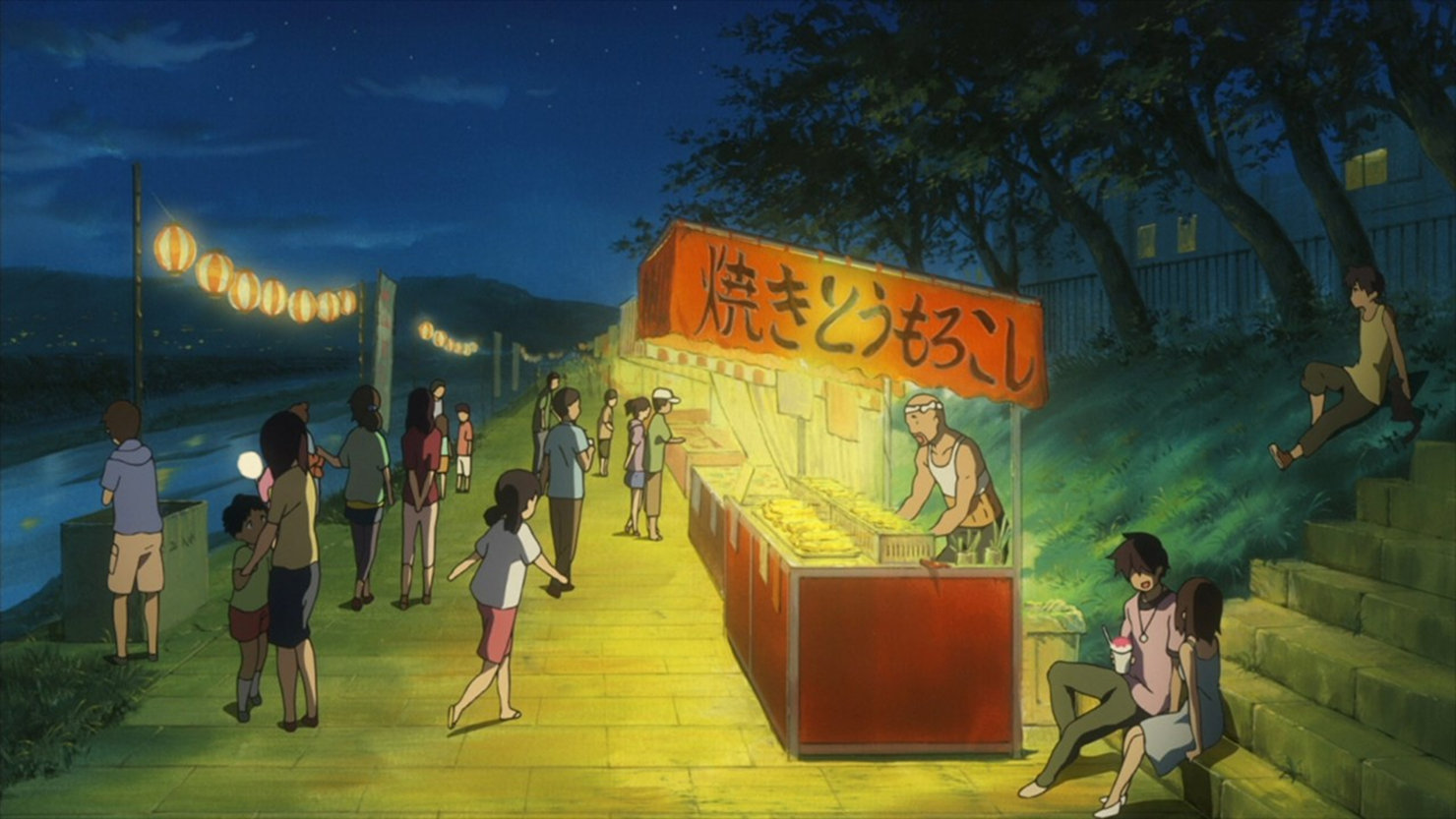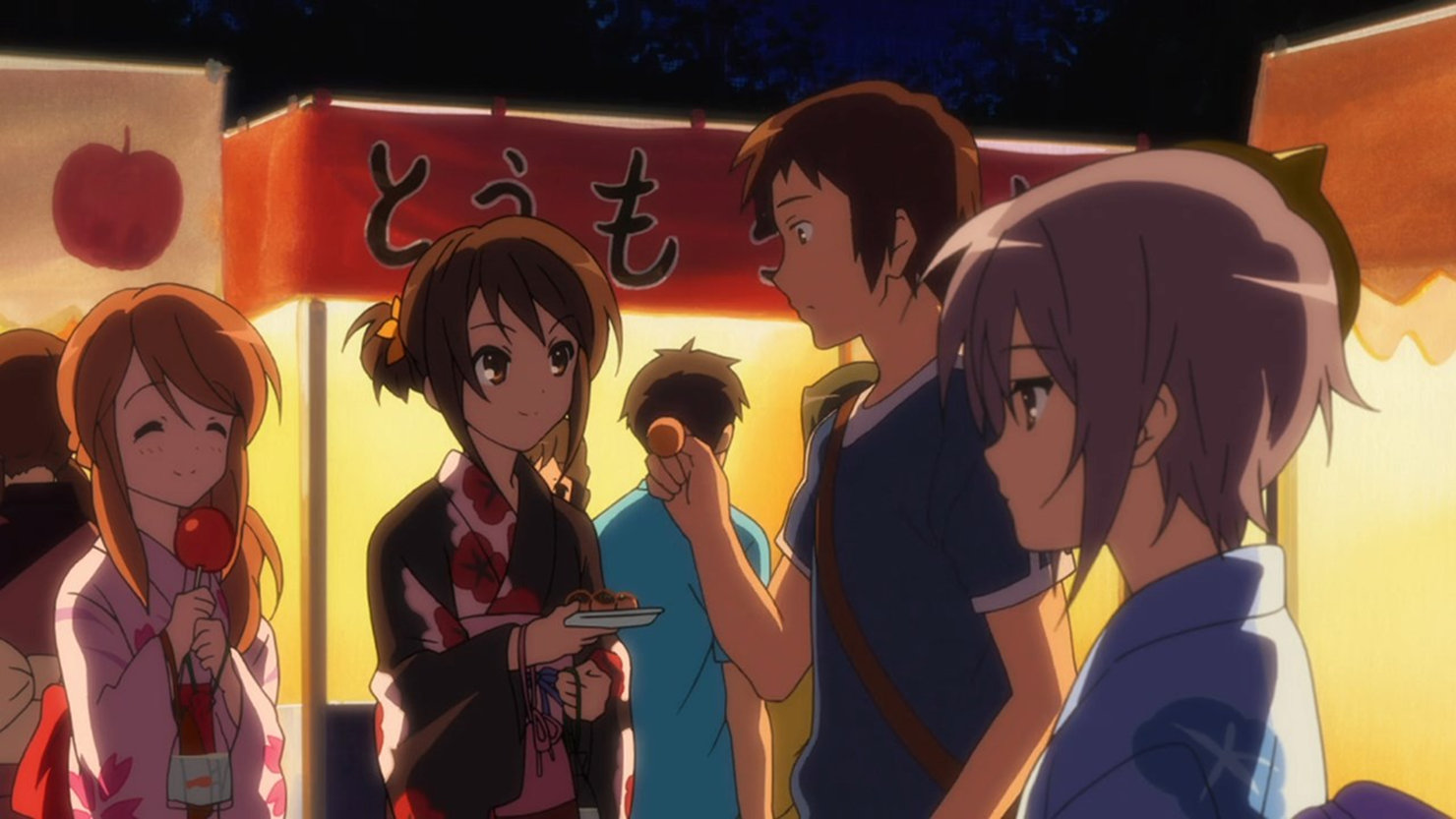A rare anime in the genre of everyday life can do without an episode in which its characters attend a summer festival, or in Japanese – “matsuri”. As an attentive viewer can notice, in their mood, “matsuri” are very far from official holidays and, perhaps, most of all resemble the national Maslenitsa. In both cases, we are talking about folk celebrations associated with ancient religious and agricultural traditions.
That’s just if you and I have one Maslenitsa alone, then in Japan there are a great many “matsuri” (according to some estimates, several hundred thousand). So each festival is unique, despite the fact that in the anime this circumstance is rarely emphasized. Therefore, you rarely hear from the characters the specific name of the event that they are going to attend.
\
One of the few exceptions to this rule is the endless August arc from the animated film The Melancholy of Haruhi Suzumiya, where, entangled in a time loop, the characters visit the Obon festival over and over again. It is interesting that this holiday is far from a local scale, it is all-Japanese and is associated with the commemoration of the dead.
In Obon, Japanese Buddhists burn huge bonfires, float paper lanterns on the water and perform ceremonial dances, which should appease the souls of their ancestors and guarantee a good harvest. Haruhi and his friends, visiting the festival again and again, do not observe any bonfires or lanterns, but they look at the rhythmic “bon-odori” more than once, which makes it possible to unmistakably identify this “matsuri”.
But in the “Sakura Adventure” they describe in detail the preparations for a specific, but, apparently, fictional festival. “Matsuri” is dedicated to the legend of the water dragon, which once lived in the native village of Manoyama heroines. The locals sang and danced for him to appease the supernatural creature, and so a tradition arose to arrange a holiday on this occasion. At the time of the anime, the custom is already a thing of the past, but the five beautiful employees of the tourism department are eager to restore it. This whole situation is a wonderful example of what most of the Japanese “matsuri” are, how local they are, and what a unique spectacle they are.
And yet, most anime characters are not interested in the essence of this or that “matsuri”. For them, the main thing is to dress beautifully, eat delicious food and generally have a good time in the festival crowd.
How to dress nice
Thanks to anime, every latent Japanologist knows that it is customary to wear a yukata on a “matsuri”, a summer variety of the national kimono, which, in fact, is a cotton or linen robe intercepted by an “obi” belt. However, our common passion with you is capable of latently creating several misconceptions regarding this issue.
Firstly, not only girls can come to the “matsuri” in traditional clothes. At the same time, in most of the anime, only young ladies flaunt in yukata, invariably causing admiration in familiar boys and men. In the same rare films and serials, where the image of a young man in a national costume appears, this rather becomes an occasion for a slight smile. Let us recall at least Tsutsui from “The Real Girl”: the authors almost point the finger at him – what an eccentric, he came to the “matsuri” do not understand what.
Secondly, the Japanese wear traditional clothes not only at festivals. Weddings, funerals and a whole bunch of national holidays – from Shichi-go-san to Coming of Age Day – all this is an occasion for many residents of the Land of the Rising Sun to dress in kimonos and other derivatives of the national costume.
So why are anime creators so stubbornly dressing up their characters in Japanese style only as “matsuri”? The answer is simple: most of the characters we are talking about here are schoolchildren. More complex types of kimono, such as, for example, furisode, which girls wear on Coming of Age Day, are neither in status nor affordable for them. You have to be content with a simple yukata, although the audience is happy with this turn of the plot.
How to eat delicious
Any on-screen “matsuri” is, first of all, a celebration of the stomach. At least in the perception of anime characters (and they, as you know, are not fools to eat).
One of the favorite dishes of the festival is yakisoba or, in other words, fried buckwheat noodles. It is eaten not only on summer, but also on winter holidays. So, yakisoboy traditionally indulge in New Year’s celebrations. At the same time, in the cold season, noodles are eaten warm, and in the heat, on the contrary, chilled.
There is even a special entertainment: to lower soba along with water along a bamboo chute, while the participants in the action must catch it with chopsticks and immediately absorb it. It is believed that cool food, combined with the sound of murmuring water, has a calming effect on a person exhausted from the heat.

Summer festivals in Japan: instructions for use
Let’s remember further: what other kind of food did anime characters look for at festivals? Exactly – takoyaki! This dish consists of batter-shaped balls with octopus meat inside, which are fried in a sauce. They are, for example, sampled at the Obon festival by Haruhi and Kyon.
Takoyaki, yakisoba, and even the familiar popcorn that the charming characters of “Keyon!” indulge in are popular street foods in Japan. It is prepared in bright awnings, and they are shown to the viewer first of all in the festival scenes.
We add that tents with street food can be found not only on the “matsuri”, it happens to be seen on weekdays, usually near temples and monasteries.
